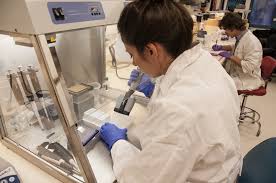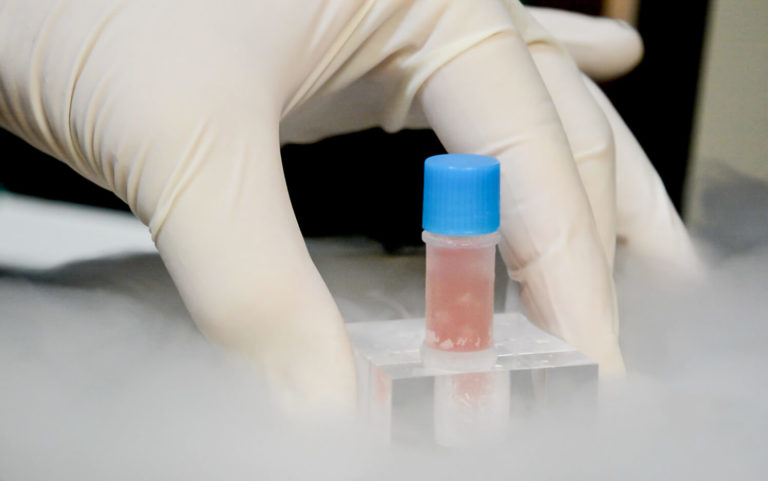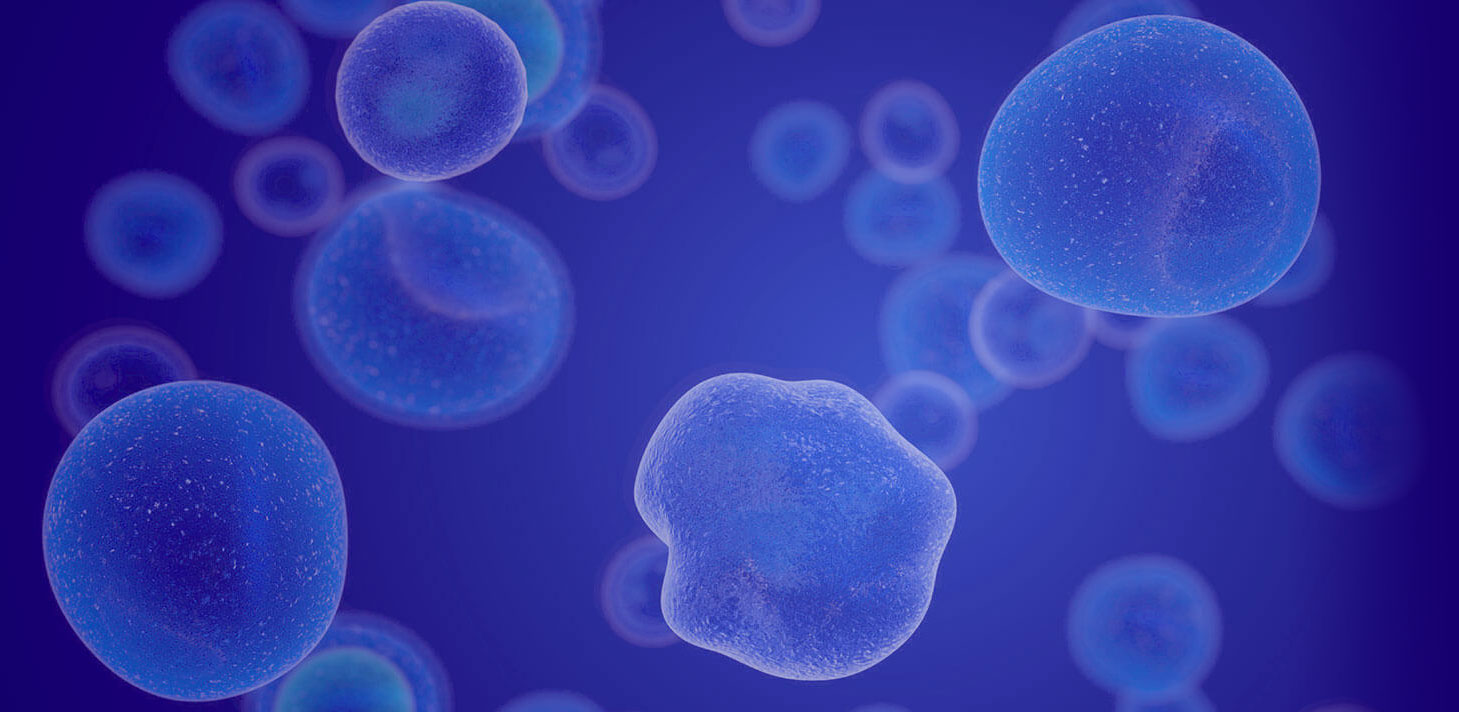Stem Cell Therapy
Conveniently located to serve the areas of Greenville, SC, Spartanburg, SC, Columbia, SC, Anderson, SC and Asheville, NC
The Stem Cell Is the Building Block of Innovative Healing

The human body can heal itself in the blink of an eye. In fact, blinking is a perfect example of a bodily function that provides sustenance and protection, though we do it involuntarily and without pause thousands of times per day. This is just one instance of how our bodies perform unseen, unbelievable functions to keep us healthy, growing, and adapting to changes from within and without.
To harness the power of human physiology, Dr. Haasis has devoted years of study to the field of stem cell research. Stem cells represent the root of integrative medicine, a discipline to which Dr. Haasis is passionately dedicated. He has combined his quest for holistic healthcare with his vast experience in molecular biology to become the ultimate resource for wellness. To learn more about Dr. Haasis and his fascinating work with stem cells, please contact our office in Greenville, South Carolina.
Contents
- 1 The Stem Cell Is the Building Block of Innovative Healing
- 2 What Are Stem Cells?
- 3 The Journey of a Human Stem Cell
- 4 Benefits of Stem Cell Therapy
- 5 Eligible Candidates
- 6 Private Consultation in Greenville, South Carolina
- 7 Stem Cell Therapy Procedure
- 8 Amazing Results
- 9 Complementary and Alternative Procedures
- 10 FAQ
- 11 References
What Are Stem Cells?

Stem cells are undifferentiated structures that can evolve into various specialized cells to deliver maintenance, repair, and healing where they are needed most. Mesenchymal stromal cells (MSCs) are cells with multipotent capabilities, meaning they have the potential to become cells of various types (bone cells, blood cells, etc.).[1,2] Stromal cells form the connective tissue within a system while parenchymal cells actually perform the function of that system. For example, the parenchymal cells in a kidney help perform renal functionality while the stromal cells provide support in the form of blood vessels and connective tissue.
There is much debate about the differences and similarities between mesenchymal stromal cells and stem cells.[3] The use of these terms is sometimes interchangeable, but it is important to distinguish between the cells being discussed. A cell is defined by its origins, so let’s assess the various types of stem cells according to their derivation.
Embryonic Stem Cells
While embryonic cells may be the most frequently discussed variety of stem cells, they are problematic for a number of reasons. Embryonic cells have the potential to become various structures; everything from teeth to hair to blood vessels. If improperly handled, these cells can also develop into tumors called teratomas.[4,5] There are also ethical and logistical issues entailed with the use of embryonic stem cells. For these reasons, Dr. Haasis does not offer embryonic cell therapy at his clinic.
Bone Marrow Stem Cells
A more promising focus of study is the harvestation and application of bone marrow stem cells. These structures have shown the propensity to develop into healthy, strong cells of various types throughout adulthood. The stem cells hiding in your bone marrow could hold the key to various recuperative procedures, even those involving heart attack patients.[6]
Adipose Stem Cells
While bone marrow stem cells are wonderfully variable, they can be difficult to harvest. Their numbers are often low, they are scattered intermittently throughout the marrow, and let’s face it: they are protected by bones. Another viable donor area is adipose (fat) tissue. Adipose stem cells can be retrieved via the liposuction process or sample extraction.[7]
Allograft Stem Cells
Stem cells may be isolated from many sources including fat and bone marrow as mentioned. Allograft stem cells offer many advantages and are obtained from a tissue bank. These facilities are FDA regulated and provide quality biologicals for physician use. Allograft regenerative products are obtained from consenting donors that undergo extensive and comprehensive testing to meet federal government standards to ensure safe use. As we age, the number of stem cells in our body decreases, and our ability to recover from injury is compromised. Allograft biologicals allow us to amplify the natural repair processes by introducing stem cell therapy to injured tissue.
During your individual consultation, Dr. Haasis can explain the benefits of each type of stem cell derivation and how they pertain to your health maintenance. Contact our office and learn how stem cells can flourish into limitless possibilities for you!
The Journey of a Human Stem Cell
While the human body presents a vast landscape of scientific possibilities, that is one of its biggest problems: how vast it is. Stem cells in one area of the body cannot migrate to another part without a helping hand from medical science.
Meet Dr. Haasis
Dr. Haasis thoroughly screens and verifies his donor cells from a trusted source so that he can pass the peace of mind on to you. He will then transplant them to an area in need. For example, if you have injured your knee, the bones and cartilage in the joint need attention. Meanwhile, you have mesenchymal stromal cells lingering in your fat cells that are essentially trapped. By harvesting these cells, purifying them, and relocating them to the site of your knee injury, Dr. Haasis can revolutionize the healing process. Alternatively, allograft products can be used with great efficiency and efficacy and circumvent a potentially painful harvesting procedure.
Benefits of Stem Cell Therapy

Surgery can be invasive and disruptive. Medications may be more toxic than they are worth. If you are struggling with tissue damage and wish to find a cure within the biology of your own body, stem cell therapy may be the ideal solution.
Eligible Candidates
To determine your eligibility for stem cell therapy, schedule a comprehensive consultation with Dr. Haasis. Candidacy depends on several factors, including the reason for your visit and the viability of your donor cells. If you do not have enough stem cells in your fat layers and/or your bone marrow to contribute to the stem cell therapy process, Dr. Haasis can brainstorm alternative procedures to help you progress along your healthcare journey.
Private Consultation in Greenville, South Carolina
During your consultation, Dr. Haasis will gather your information and assess your needs. Communication is essential to improvement, so please be ready to share your medical history and future goals. From there, Dr. Haasis will explain which strategies may work best for your case. If stem cells hold the answers to your healthcare woes, then the doctor will explain how the process works in relation to your physiology. If other remedies offer more promise than stem cells, Dr. Haasis will provide those options to you openly and honestly. After all, your wellness is the bottom line.
Stem Cell Therapy Procedure
Dr. Haasis will prioritize your comfort and safety. He and his staff take a patient centric approach. During your initial consultation he will fully explain the planned procedure, answer ALL questions, and address ALL concerns. All Axial Spinal and Appendicular Joint injections are performed under Fluoroscopic or Ultra Sound guidance to ensure proper placement of the biologics. Dr Haasis may suggest adding acupuncture to your treatment protocol to accelerate results.
Amazing Results
Damaged tissue is crying out for relief. The cells are trying to communicate with one another, but they are unfortunately surrounded by other injured cells. By introducing stem cells to the point of damage, Dr. Haasis can transform the healing process. Undifferentiated cells have the capacity to adapt to their surroundings and provide support to bones, ligaments, cartilage, and other specialized systems.
Complementary and Alternative Procedures
Healing is a comprehensive process. Your entire body responds to an injury, even if it is localized. For instance, when you twist your ankle, your nearby muscles compensate. You may experience a rush of adrenaline to compensate for the pain. Your circulation even reacts to the trauma by increasing its pulse.

This last point is a key matter of research and innovation. There are healing properties in human plasma that can provide elevated results when properly applied. The platelets in your blood are designed to clot and cradle wounds, but they also communicate with one another chemically. Platelets form a cohesive system that embraces healing and amplifies wellness.
By isolating your platelets, Dr. Haasis can create a serum called PRP (platelet-rich plasma) from your own blood. This compound is able to respond to damaged tissue by targeting it precisely and speeding up the healing process. PRP therapy can be conducted in conjunction with other disciplines, like stem cell therapy.
Dr. Haasis is also a master of exosome therapy. This is another procedure that utilizes the body’s internal messaging system. Exosomes are the secretions from cells that facilitate growth and healing. By navigating the fascinating possibilities of exosome research, Dr. Haasis is able to control the conversation between your cells. Injuries now have a voice, and exosomes are doing the talking.
FAQ
How much does stem cell therapy cost in South Carolina?
You deserve the best care at the right price. The cost of your stem cell therapy depends on several factors: the viability of your own cells, the extent of the damage being treated, and the number of sessions required to achieve a successful outcome. Dr. Haasis will provide transparent pricing at every step in the process, so please contact our clinic and start a conversation about your best self.
References
- Caplan, A. I. (1991). Mesenchymal Stem Cells. Journal of Orthopaedic Research. 9(5)641-650. https://doi.org/10.1002/jor.1100090504
- Dominici, M., Le Blanc, K., Mueller, I., Slaper-Cortenbach, I., Marini, F. C., Krause, D. S., Deans, R. J., Keating, A., Prockop, D. J. & Horwitz, E. M. (2006). Minimal criteria for defining multipotent mesenchymal stromal cells. The International Society for Cellular Therapy position statement, Cytotherapy, 8:4, 315-317, DOI: 10.1080/14653240600855905
- Keating A. (2006). Mesenchymal Stromal Cells. Current Opinion in Hematology, 13(6), 419–425. https://doi.org/10.1097/01.moh.0000245697.54887.6f
- Ben-Porath, I., Thomson, M., Carey, V. et al. An embryonic stem cell–like gene expression signature in poorly differentiated aggressive human tumors. Nature Genetics. 40, 499–507 (2008). https://doi.org/10.1038/ng.127
- What’s the relationship between stem cells and tumors? (2007). Nature Reports Stem Cells. https://doi.org/10.1038/stemcells.2007.25
- Orlic, D. Kajstura, J., Chimenti, S., Bodine, D. M., Leri, A., Anversa, P. (2003). Bone marrow stem cells regenerate infarcted myocardium. Pediatric Transplantation. 7(3)86-88. https://doi.org/10.1034/j.1399-3046.7.s3.13.x
- Lindroos, B., Suuronen, R. & Miettinen, S. (2011). The Potential of Adipose Stem Cells in Regenerative Medicine. Stem Cell Reviews and Reports. 7, 269–291. https://doi.org/10.1007/s12015-010-9193-7


